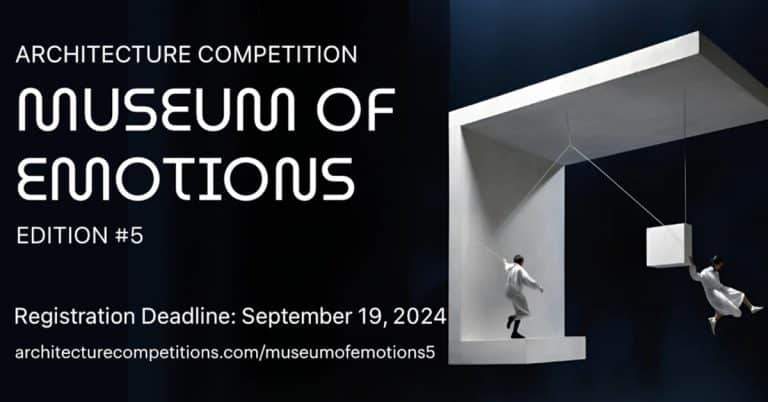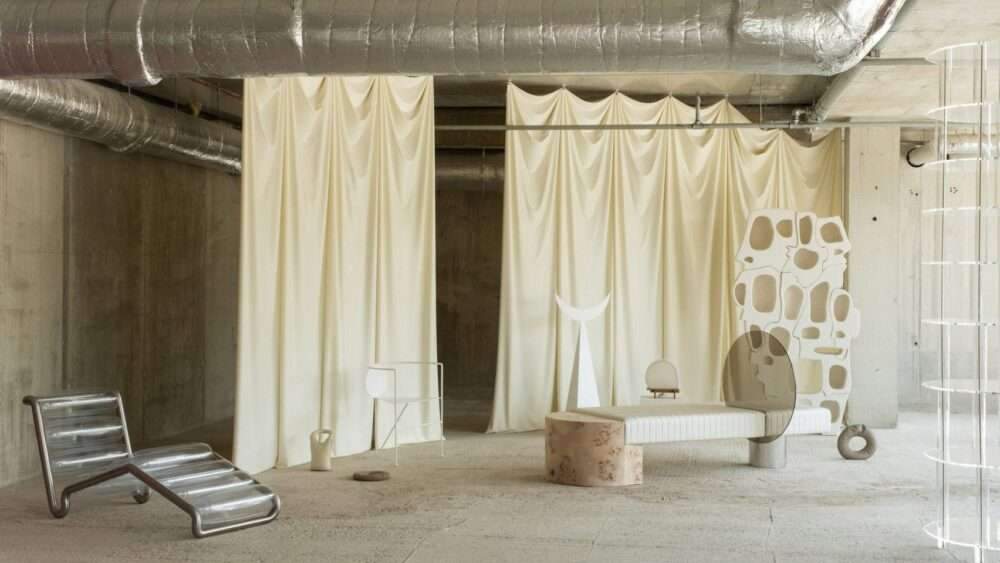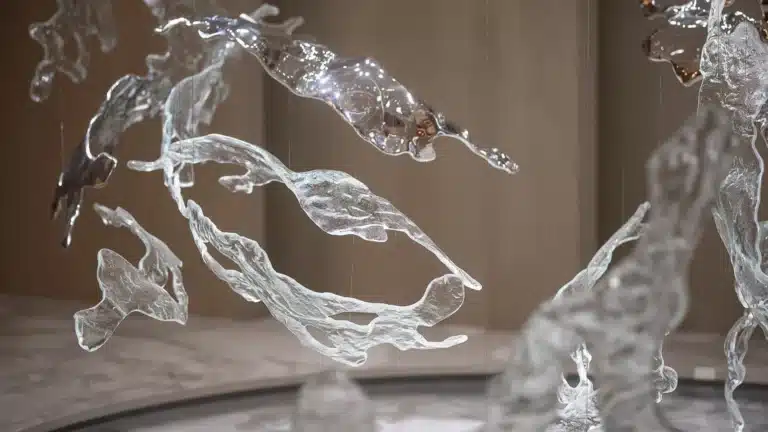Chicago exhibition includes Frank Lloyd Wright building fragments
A variety of fragments from iconic buildings are on display at the Art Institute of Chicago as part of a permanent exhibition called Architectural Fragments from Chicago.
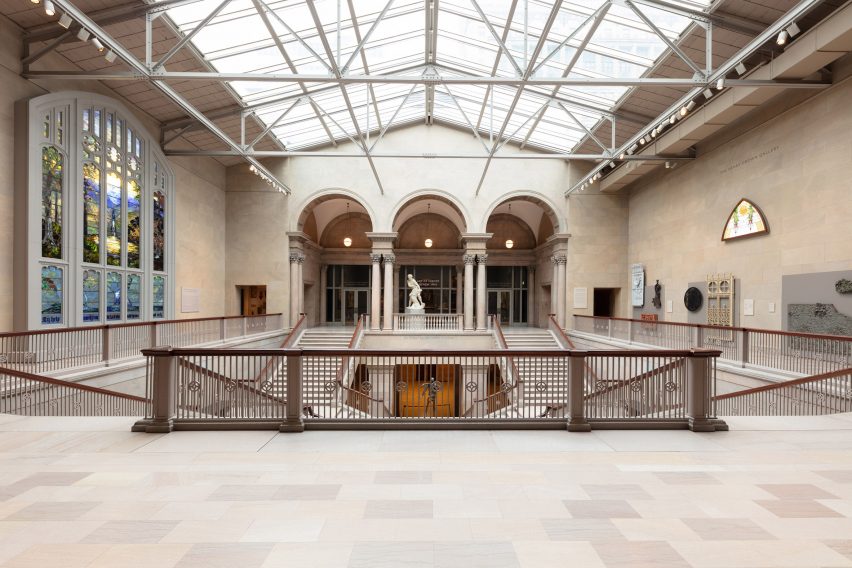
Also, The pieces displayed are sourced from local, architecturally significant buildings in order to illustrate and preserve Chicago’s built history.
“Architectural fragments are part of a material history that speaks to past building practices. Therefore, changing neighborhoods, and evolving ways of life,” said the studio.
“Recuperated from demolished or renovated buildings, these pieces of facades or interiors help preserve the memory of architecturally or culturally significant structures long after their physical presence has been erased.”
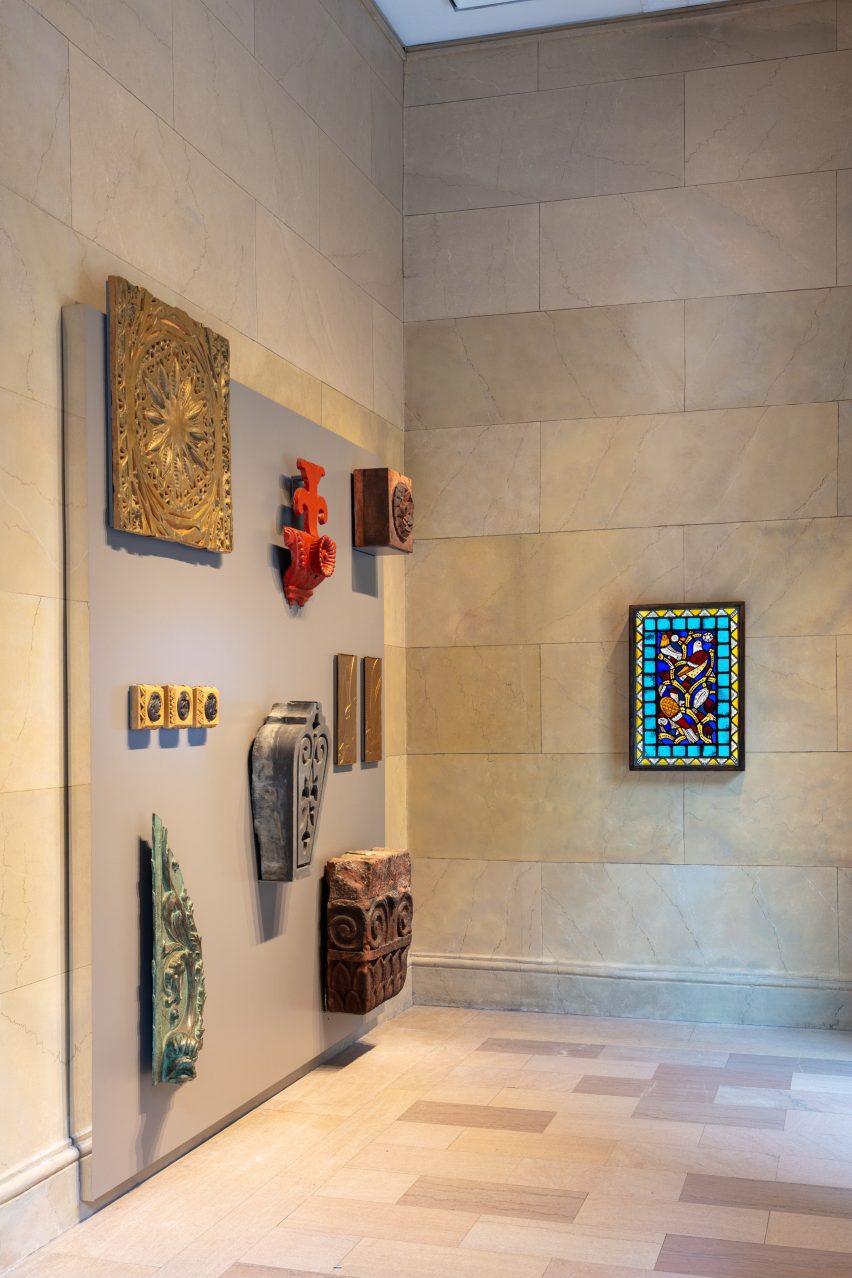
Architectural elements such as sections of cornices, wall panels, an elevator grille, and a column are displayed.
The fragments were mounted across the space from a large stained glass window that is a part of the same exhibit.
Also among the pieces are an ornate circular ventilator grille and entrance door from Frank Lloyd Wright’s four-story Francis Apartments, built in 1895 and demolished in 1971.
Both fragments display Wright’s early use of organic forms, informed by his mentor Louis Sullivan.
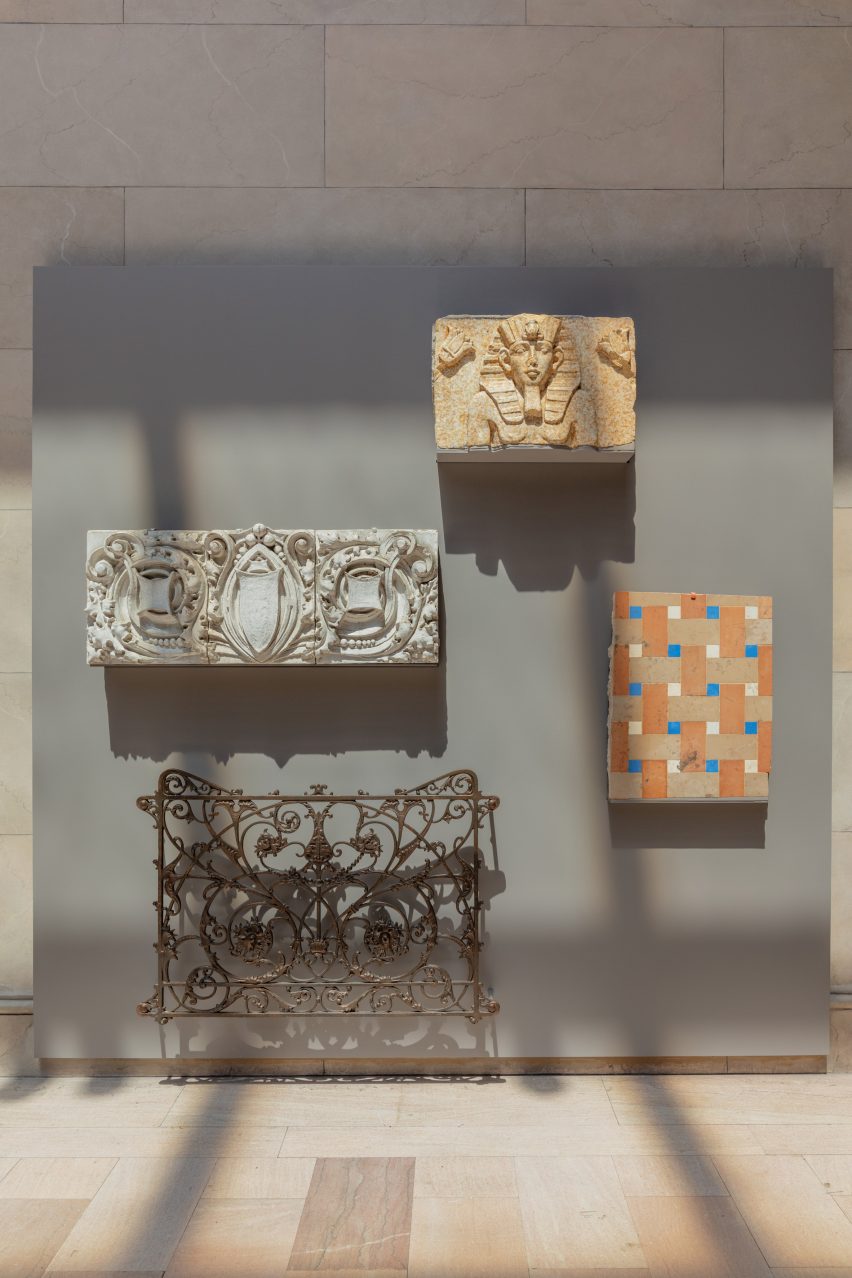
A cast iron cornice section and spandrel panel from Sullivan’s Gage Building, one of his last to be commissioned in Chicago, are also included. Both feature plant shapes and organic, curving lines.
Works from other architects include a facade panel from the National Pythian Temple by Walter T. Bailey and a colorful section of floor tiles from the Mecca Apartments by Edbrooke and Burnham.
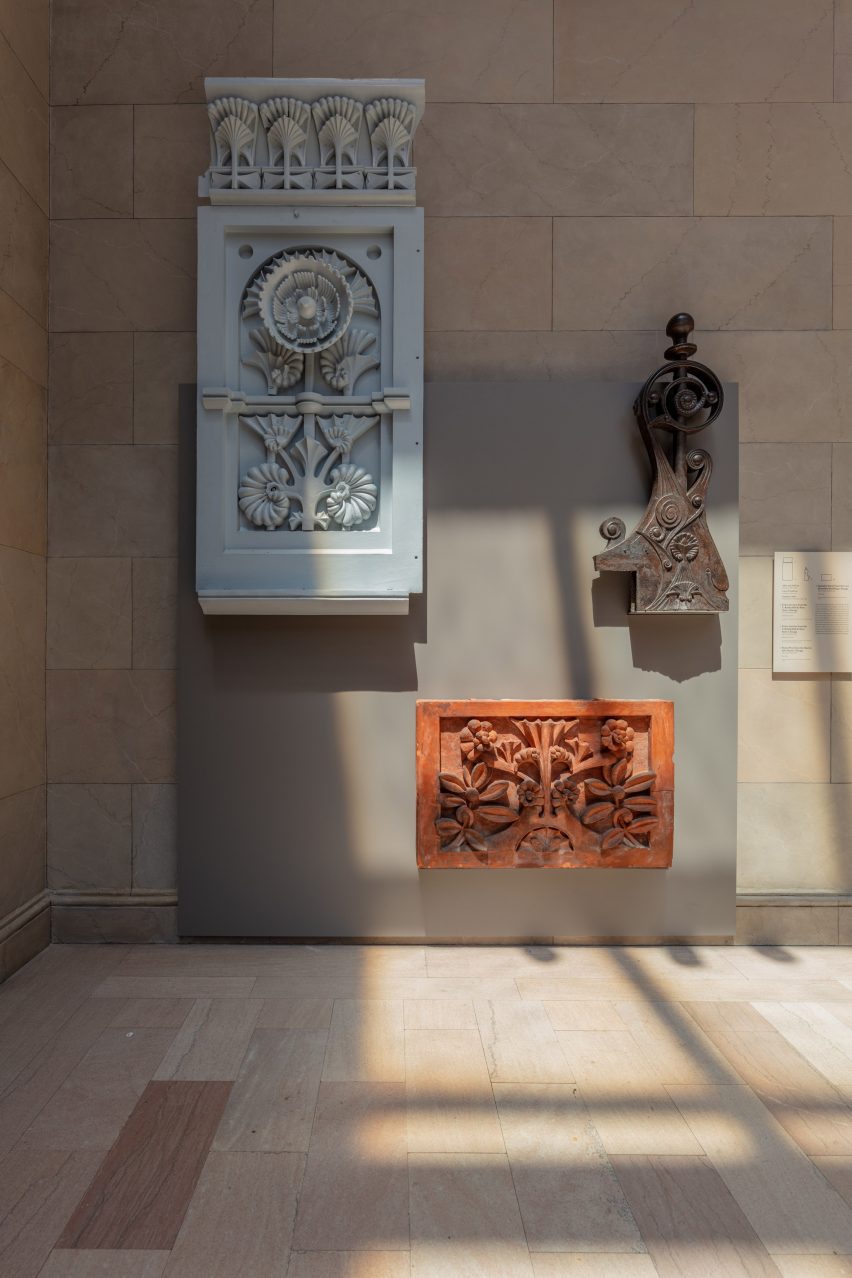
Furthermore, Lightbox installations include a geometric stained glass window from Frank Lloyd Wright’s Coonley Playhouse and the Tiffany Studios 1917 Hartwell Memorial Window that depicts a sprawling landscape of over 48 panels.
“While this installation represents many works by Chicago’s celebrated modern architects, other fragments come from buildings by lesser-known designers who were equally important in shaping spaces of activism, community, creativity, and labor in our dynamic metropolis,” said the studio.
Moreover, The fragments have been cataloged as part of the museum’s permanent collection.
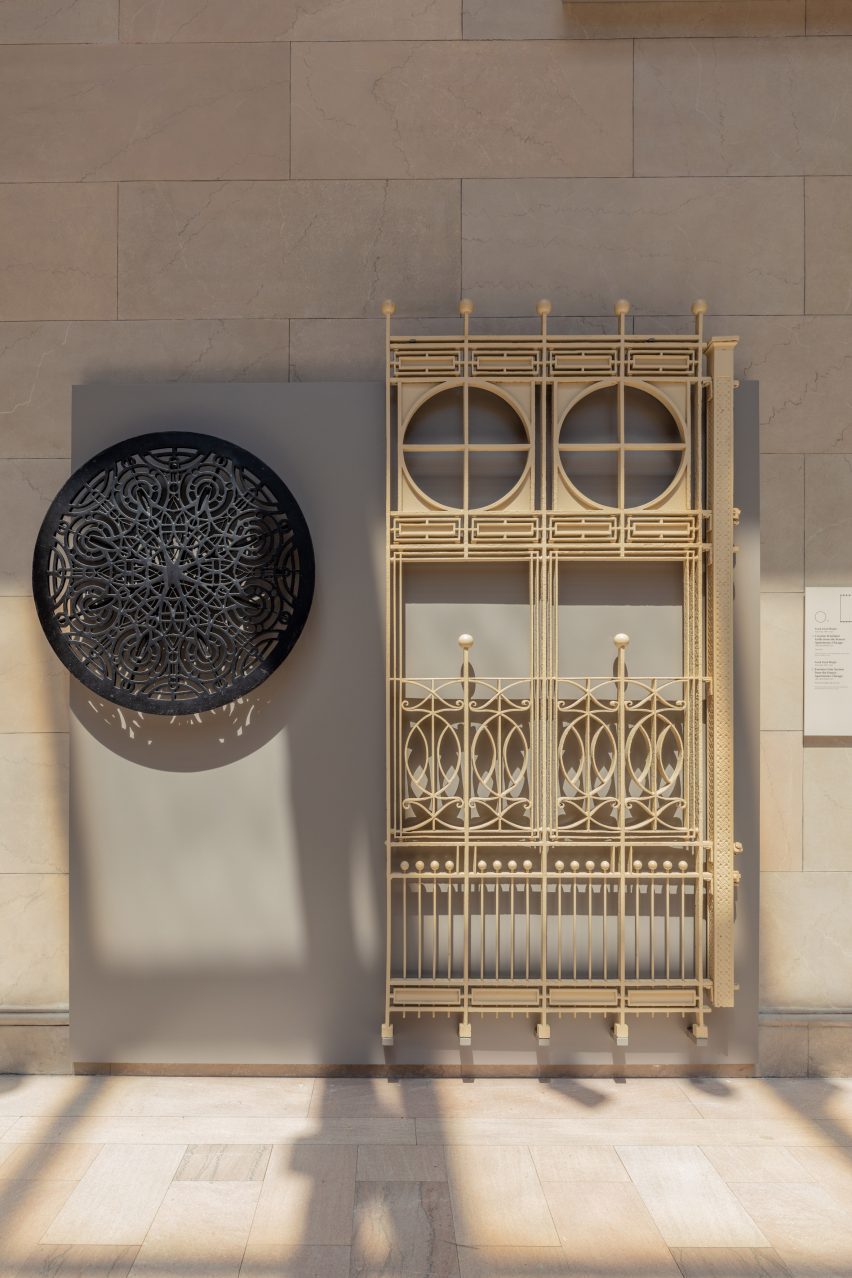
Norman Kelley is based in Chicago and New Orleans and was founded by Thomas Kelley and Carrie Norman in 2012.
Finally, read more on Archup:




